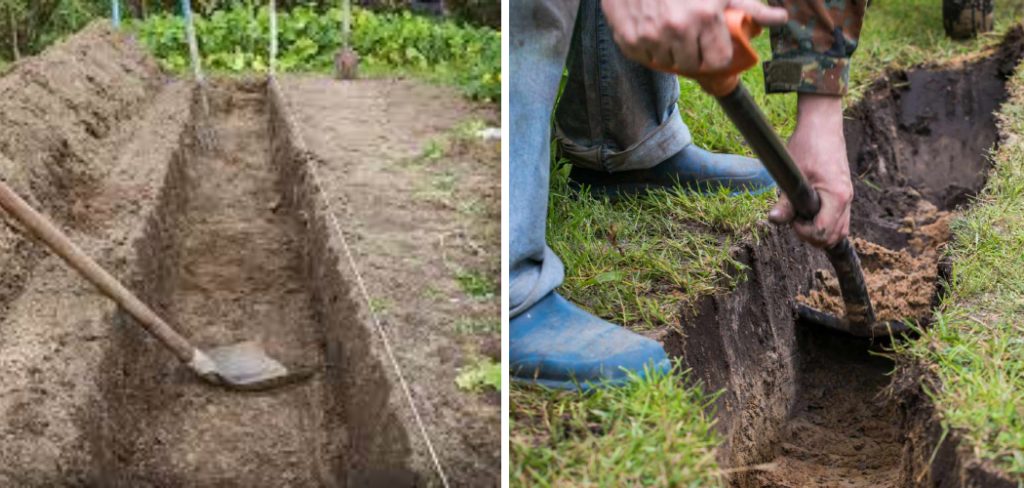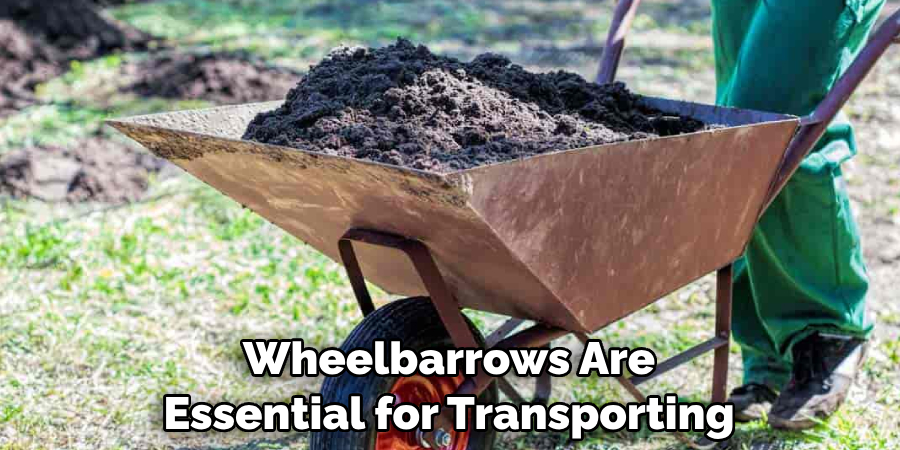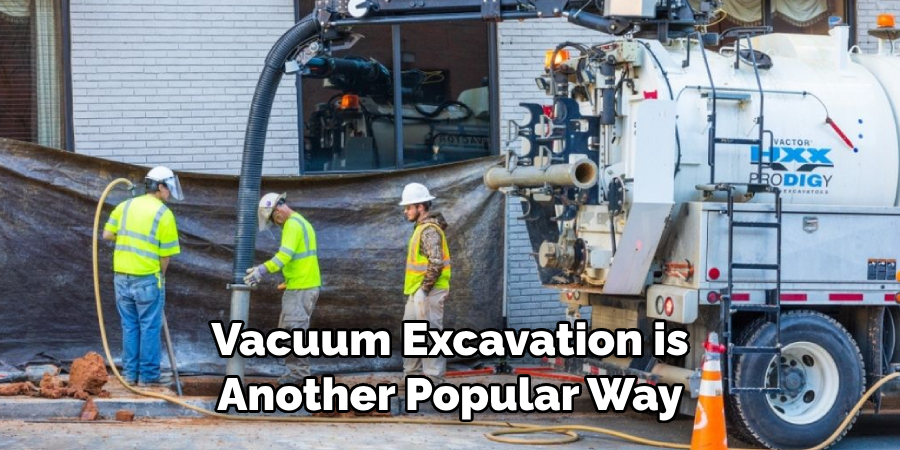Excavation is a critical step in various projects, whether you’re landscaping your backyard or working on a construction site. While excavators and heavy machinery are commonly used for this purpose, there are scenarios where utilizing such equipment is impractical or simply not feasible.

In such situations, manual excavation techniques become indispensable. Excavating without machinery involves employing manual tools and strategic methodologies to dig, move, and shape the earth.
It demands physical effort, careful planning, and a keen understanding of the terrain and soil conditions. This guide will outline effective techniques and tools for how to excavate without a machine, providing insights to help you undertake an excavation project without relying on heavy machinery.
Why Excavation without a Machine May Be Necessary
Excavation is a process that involves digging and moving earth in order to create a hole or trench for construction purposes. This can be done either manually, using hand tools such as shovels and picks, or with the help of heavy machinery like excavators and bulldozers.
While most excavation projects rely on machines to get the job done quickly and efficiently, there are instances where excavation without a machine may be necessary. In this document, we will explore the reasons why this method may be chosen and how it is carried out.
Reasons for Excavation Without a Machine
There are several reasons why someone might opt for excavation without a machine:
- Limited Access: In some cases, the area that needs to be excavated may not be accessible by heavy machinery. This could be due to narrow pathways, steep inclines, or other physical barriers.
- Cost: Excavation with heavy machinery can be expensive, especially for small-scale projects. In such cases, manual excavation may be a more cost-effective option.
- Environmental Impact: The use of heavy machinery can result in damage to the surrounding environment, such as soil compaction or disruption of plant life. Excavation without a machine can help minimize these impacts.
- Precision: For smaller and more delicate jobs, manual excavation allows for greater precision and control over the digging process. This is especially important when working near existing structures or underground utilities.
- Preservation: In some cases, the area to be excavated may have historical or cultural significance. Manual excavation allows for a more careful and detailed approach, helping to preserve any artifacts or structures that may be present.
- Noise and Disruption: The use of heavy machinery can cause significant noise pollution and disruption to nearby areas. Excavation without a machine can help minimize these disturbances.
- Access Restrictions: In certain areas, the use of heavy machinery may be restricted due to local regulations or safety concerns. Manual excavation offers a viable alternative in such situations.
- Versatility: Manually excavating allows for greater versatility and adaptability, as workers are not limited by the capabilities of heavy machinery. This can be advantageous when working in unique or challenging terrain.

Choosing the Right Tools for the Job
One of the most important aspects of excavating without a machine is choosing the right tools for the job. While it may be tempting to use whatever tools are available, it is essential to select the proper equipment for each specific task.
Hand Tools
Hand tools are an excellent option for small-scale excavation projects. They require physical strength and manual labor but can be very effective when used correctly. Some common hand tools used in excavation include shovels, picks, and trowels.
Digging Bars
Digging bars, also known as crowbars or pry bars, are another useful tool for excavating without a machine. They are typically made of steel and have a pointed end that can be driven into the ground to loosen soil and rocks.
Wheelbarrows
Wheelbarrows are essential for transporting soil, debris, and other materials while excavating without a machine. They come in different sizes and can easily maneuver through narrow spaces, making them an ideal tool for smaller excavation projects.
Trenching Shovels
Trenching shovels are designed specifically for digging long, narrow trenches. They have a sharp, pointed blade that can easily break through hard soil and roots.
Hand Augers

Hand augers are useful for excavating smaller holes or for sampling soil. They consist of a long metal rod with a spiral drill bit at the end, which is turned by hand to dig into the ground.
10 Methods How to Excavate without a Machine
1. Hand Tools
Hand tools are one of the most basic and effective ways to excavate without a machine. This method requires the use of shovels, picks, and other hand tools to move soil and break up rocks.
Hand tools are especially useful for smaller excavation projects that don’t require heavy machinery. They can also be used in areas where machines cannot fit or may cause damage due to their size.
2. Explosives
Explosives are another common method used to excavate without a machine. This involves using explosives such as dynamite or nitroglycerin to break up large rocks or boulders that may be blocking the excavation site.
This method is often used in mining operations, but it can also be used for other types of excavation projects if done carefully and with proper safety precautions in place.
3. Fire
Fire is another ancient technique for excavating without a machine that is still used today in some cases. This involves building a fire on top of the area being excavated and allowing it to burn until the soil has softened enough for manual removal with hand tools or other methods.
This technique is often used when dealing with very hard soils that would otherwise require heavy machinery to break up and remove.
4. Water Jetting

Water jetting is another popular way to excavate without a machine that utilizes high-pressure jets of water to break up soil, rock, and other materials that need to be removed from an area.
The process works by blasting away at the material with powerful streams of water, which then carries away any debris created during the process into an adjacent container or truck bed for disposal elsewhere. It can also be used in combination with hand tools for more precise work if needed.
5. Manual Digging
Manual digging is a traditional method of excavation that involves using simple shovels, picks, and other hand tools to remove dirt, rock, and other materials from an area by hand.
While this method does require significant physical labor, it can still provide excellent results if done properly over time and can even be faster than using heavy machinery, depending on the size and complexity of the project being undertaken.
6. Trenching
Trenching is another common way to excavate without a machine that involves digging narrow trenches into an area in order to access buried materials, such as pipes or cables underneath it, without causing too much disruption above ground level.
Trenches are usually dug by hand using shovels or picks but can also be done with specialized equipment such as trenchers if needed for larger projects requiring more precision workmanship than what manual digging alone can provide..
7. Vacuum Excavation

Vacuum excavation is another popular way to excavate without a machine that utilizes powerful vacuums connected via hoses to an enclosed tank system located nearby in order to suck up dirt, rock, sand, gravel, etc.
From an area quickly and efficiently while leaving minimal disruption behind once finished with its job. It can also reduce the risk of damaging underground utilities or other structures, making it a safer option in some cases.
8. Jackhammering
Jackhammering is another effective way of breaking apart hard surfaces such as concrete or asphalt without needing any heavy machinery involved at all by utilizing handheld jackhammers powered either by electricity or gasoline in order to chip away at these surfaces until they have been broken down into smaller pieces suitable for removal via manual means afterward.
9. Pneumatic Hammers
Pneumatic hammers are similar in concept as jackhammers, except they utilize compressed air instead of electricity or gasoline power sources in order to generate enough force required for breaking apart hard surfaces like concrete or asphalt when no heavy machinery is available onsite..
10. Hydro-Excavation
Hydro-excavation is another modern technique utilized nowadays when no machines are available onsite which combines both pressurized water jets along with suction capabilities within one single unit capable of breaking apart hard surfaces while simultaneously sucking up any debris created during this process afterward into its own onboard storage tank ready for disposal elsewhere afterward.
Conclusion
The experience of excavating without a machine can be extremely rewarding, but it should not be taken lightly. As excavation is an intricate and precise process, meticulous preparation and planning are essential for success. In addition to planning carefully, enlisting the help of experienced professionals can be invaluable when handling larger or more difficult projects.
Though digging by hand requires strength and endurance, investing in the necessary tools and safety equipment is a must for any successful excavation endeavor.
With that being said, having the right knowledge and skillset on how to excavate without a machine is essential for a successful project. For those seeking an exciting opportunity to learn something new, this may be the perfect adventure!
Regardless of your project size or complexity, research all aspects of excavating without a machine before taking on such an endeavor—you won’t regret it!
